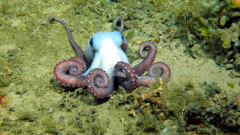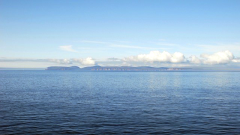Habitats
The various habitats, and consequently the species they support, are influenced to a greater or lesser extent by a range of physical factors including depth, salinity, light, geology, wave exposure, tidal range and currents. The intertidal environment is very dynamic with the twice daily rise and fall of the tide exposing the communities of animals and plants to extremes of temperature and salinity. Wave exposure also affects the nature of the sedimentary habitats in particular with mud predominating in the more sheltered areas and sand/gravel in the more exposed places. This in turn influences the animals and plants found there. The sea bed below the intertidal on the continental shelf becomes progressively less dynamic with increasing depth as the effect of waves and variations in temperature and salinity are reduced and light levels decline. The deep seabed is predominantly sedimentary with occasional outcrops of rock in the form of seamounts and biogenic structures. In these deep areas the conditions are relatively stable with no effect of waves, very little fluctuation in temperature or salinity and no light. The water column above the sea bed – the pelagic habitat – is vast and varied and provides the medium for the dispersal of larvae of many on the species that live on the sea bed, and the living space for the plankton (microscopic plants and animals that form the base of the marine foodweb), fish and marine mammals.
The water column has also played a vital role in climate change mitigation through the dissolution of carbon dioxide (at the expense of ocean acidification) from the atmosphere and the absorption of heat. It is now also increasingly being recognised that the sedimentary seabed habitats are an important store of carbon – blue carbon. Climate change impacts on habitats are considered under Climate change - Biological impacts of climate change.




